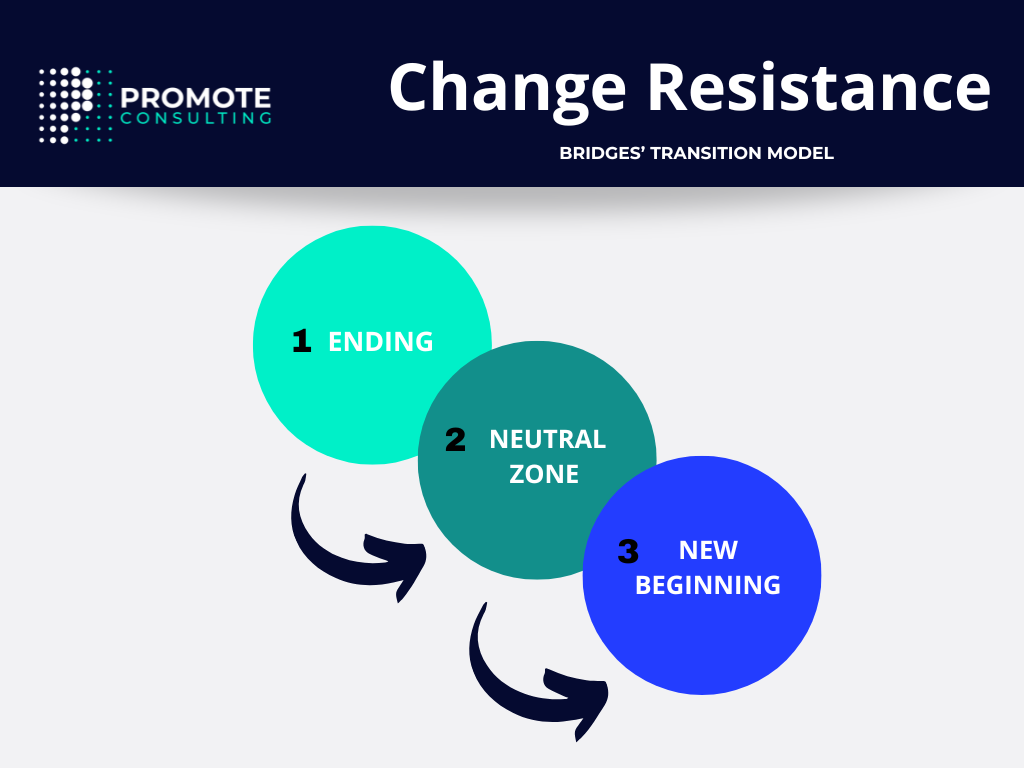In change management, when implementing new systems, we often rush to show off the latest and greatest but we forget a crucial step: people need to disconnect from the old before they can embrace the new. Bridges’ Transition Model shows it isn’t about starting with a shiny new system—it’s about letting go of the old one first.
Bridges’ model breaks down the emotional transition into three key stages:
1.) Ending- Recognising what people are losing and helping them understand the benefits of the new process.
2.) Neutral Zone- The uncertain, in-between phase where adaptation happens.
3.) New Beginning- When people finally embrace change and move forward.
Change management involves more than just its technical aspects. By guiding individuals through the emotional journey of change, Bridges’ Model can be applied to stakeholder management to provide a more enduring effect. Change can be uncomfortable for many who have lived or breathed a process for a long time but due to technological advancements in the world and shifting patterns in the way of working, pivoting tactically is crucial for businesses to stay competitive.
At Promote, we take a human-centred approach to technology, recognising that the success or failure of a transformation is often dependant on how people respond rather than if the system works. Ignoring the emotional aspects of transitions can lead to failure, but by acknowledging endings, guiding through uncertainty, and aiding the shift to new systems, we build a foundation for lasting change.
